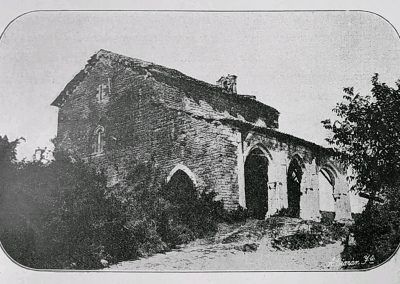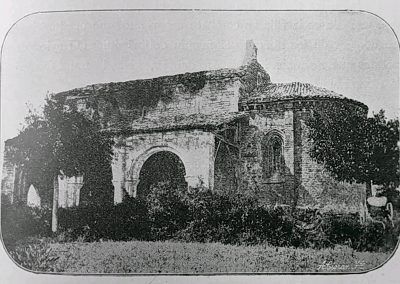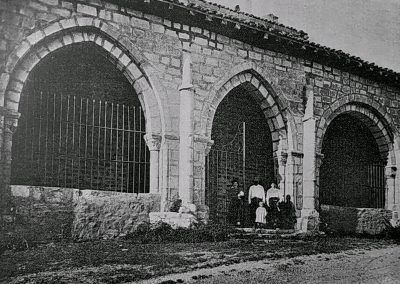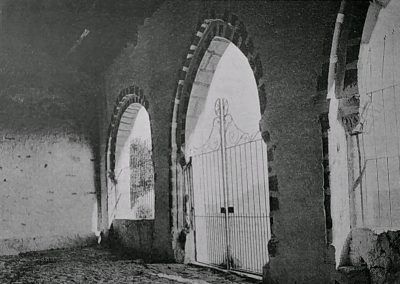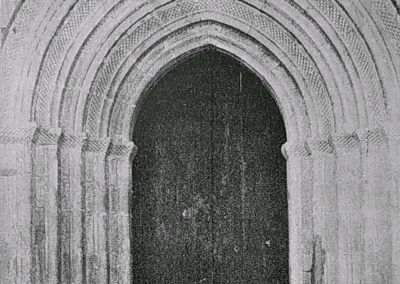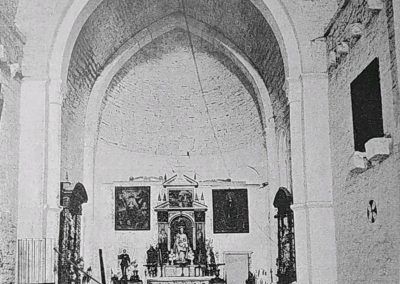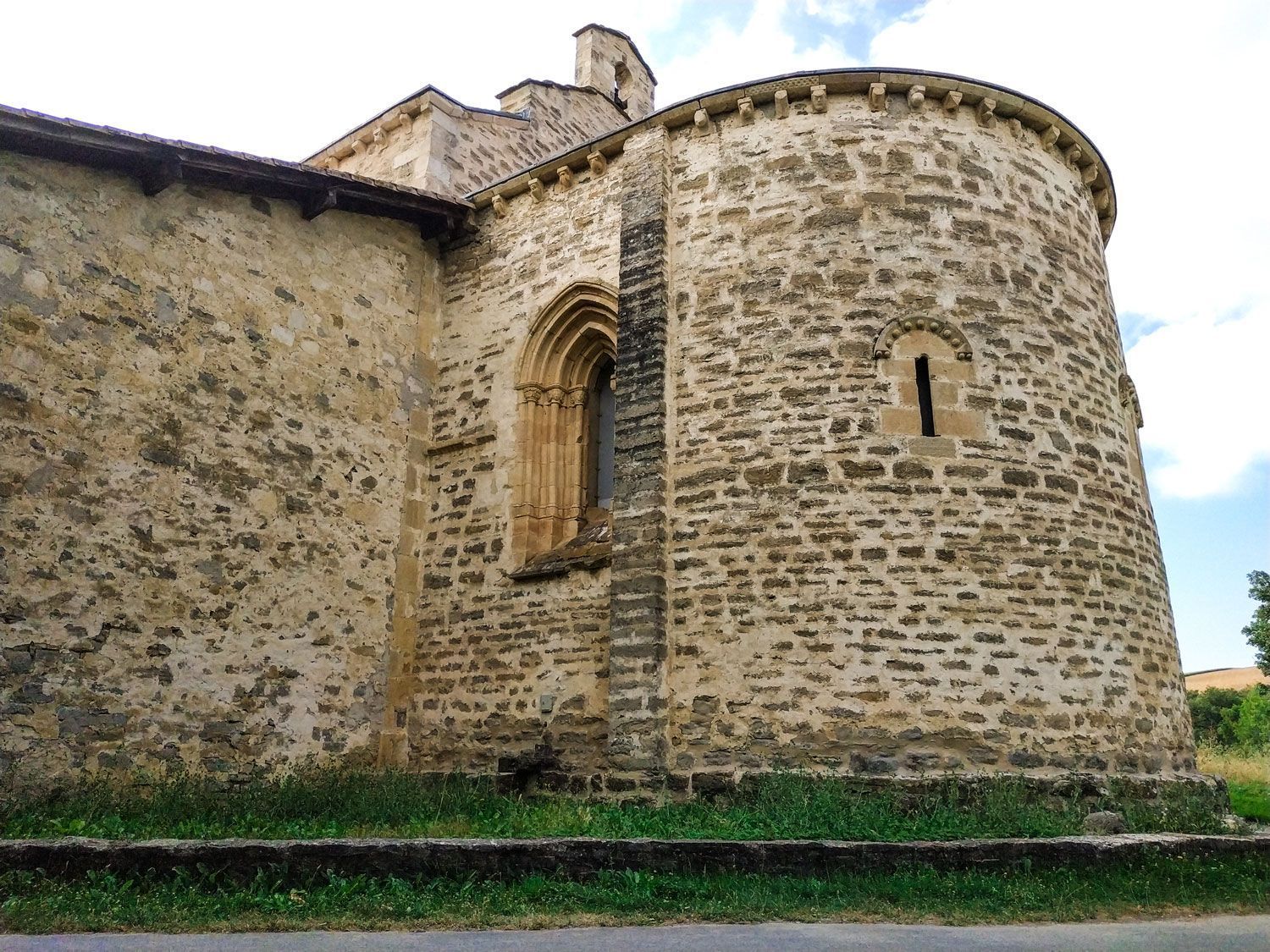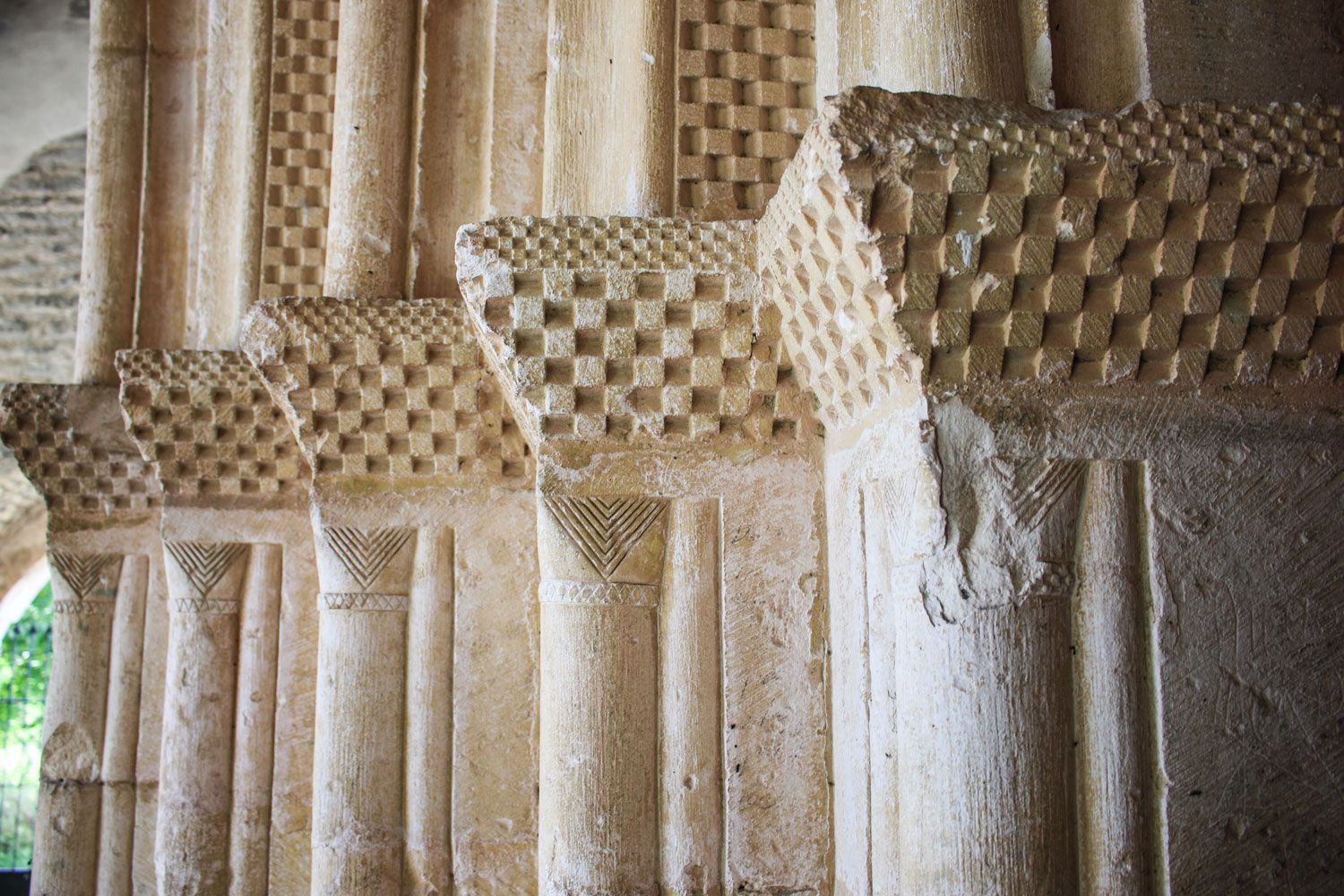
Ate digital bat ondareari irekia

SARRERA
Alegria-Dulantzitik kilometro eskas batera Aiarako Ama Birjinaren baseliza dago, Arabako lautada osoan hoberen kontserbaturik dagoen tenplu erromanikoa. Antzina, Done Jakue bidearen zati izan zen, elizaren dekorazio eta egituran arrastoak utzi dituelarik. Gaur egun baseliza bezala ikusten badugu ere, Erdi Aroan Aiarako herrixkaren tenplu parrokiala izan zen. Izan ere, gaur egun desagerturik dagoen herri honetako biztanleak bizi baldintza hobeagoren bila aldameneko herria den Alegria-Dulantzira mugitu ziren. Egun, bere bisitarako egokitzen den eremu natural zabal batean ikusi ahal dugu, inguruan, arrasto arkeologiko aunitz aurkitzen direlarik. Hauen artean, antzinako Via Crucis-aren zati ziren idulkia eta sarkofago bat.
kontsagrazioa gurutzeak
Elizaren barrualdeko perimetroan kolore gorriko horma pintura batzuk nabarmendu ahal ditugu. Erdi Aroko kontsagrazio gurutzeak dira. Apezpikuak ospatzen zuen sagaratze erritu konplexu batean margotzen ziren. Santu berri baten erlikiak eraman eta gero, hiru buelta ematen ziren honen inguruan, ondoren hormetan ur bedeinkatutako jaurtiz. Gero, barrualdera sartzen ziren, non, beste erritu batzuen artean, gurutze batzuk margotzen zituzten babes moduan. Normalean hamabi margotzen ziren, apostoluen omenez, eta kandela bat pizten zen hauen gainean. Erritu hau ez zen eliza guztietan egiten, izan ere, Erdi Aroko erritu hau jarraitzen zuten bi eliza bakarrik ezagutzen ditugu Araban: Ayalako baseliza eta Arbuloko San Martín de Toursekoa.
Eliza, XIX. mendearen amaieran, azken harrietan zen, jada Antonio Piralak bere Provincias vascongadas liburuan aipatzen zigun bezala. Berez, Piralak, elizaren “azkena” ekidin beharko zela defendatzen zuen. Zorionez, ondoren bideratu ziren zaharberritzeen bitartez, bere suntsipena saihestu egin zen. Hala ere, zaharberritzeen ondorioz antzinako arkupearen altuera gutxitu egin zuten. Eta horregatik, gaur egun, soberan geratu ziren pieza erromanikoak, hauen artean zutabe eta kapitel zatiak, atariaren barrualdean ikusi ahal ditugu.
Ayalako Ama Birjinaren baseliza
Done Jakue bidetik Aiarako Ama Birjina elizara gerturatzen garen heinean, beti ezaguna izan den profil bat ikusten dugu. Alegia, elizatik nabarmentzen dugun lehen gauza zirkuluerdi-formako burualde handia da. Hiru leihok absidea zulatzen dute. Hauetako bi apaindura soil bat daukaten gezileihoak dira, arkupearen gainean bola formako dekorazio batean oinarritzen direnak. Hirugarrena ordea, Gotiko estiloa jarraitzen duen geroagoko irekidura da. Bertako kapiteletan dama ezberdinak aurkitzen ditugu, orrazkera eta ile apaindura ezberdinekin.

De las fotografías actuales: © Alava Medieval / Erdi Aroko Araba
De las fotografías antiguas: Cristóbal de Castro, Catálogo Monumental de España. Provincia de Álava, Madrid, 1915.




